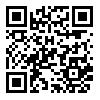مجله رویش روانشناسی از دادن گواهیهای کاغذی معذور است. لطفا تقاضا نکنید. همه گواهی ها در صفحه شخصی کاربران موجود است.
year 13, Issue 6 (summer 2024 2024)
Rooyesh 2024, 13(6): 53-66 |
Back to browse issues page
Download citation:
BibTeX | RIS | EndNote | Medlars | ProCite | Reference Manager | RefWorks
Send citation to:



BibTeX | RIS | EndNote | Medlars | ProCite | Reference Manager | RefWorks
Send citation to:
Ahmadi S, Bagherzadeh Jalilvand S. (2024). The Relationship between Screen Time and Psychological – Behavioral Problems in Adolescent: A Systematic Review Study. Rooyesh. 13(6), 53-66.
URL: http://frooyesh.ir/article-1-4525-en.html
URL: http://frooyesh.ir/article-1-4525-en.html
1- Assistant Professor, faculty of psychology and educational sciences, department of counseling, University of Kharazmi, Tehran, Iran. , ahmadi139090@yahoo.com
2- M.A. in School Counseling, Faculty of Psychology and Educational Sciences, kharazmi University, Tehran, Iran.
2- M.A. in School Counseling, Faculty of Psychology and Educational Sciences, kharazmi University, Tehran, Iran.
Abstract: (1097 Views)
Despite the benefits of digital technology, there are growing concerns, especially for adolescents, about the extent of their usage. It's crucial to note that regardless of content, the amount of time adolescents spend exposed to electronic screens can lead to various psychosocial and behavioral problems. Due to the lack of research literature on this topic in the country, this study aimed to investigate the effects of screen time on different dimensions of adolescent mental health and the problems or disorders exacerbated by it. The study employed a systematic review methodology, and relevant sources and studies from 2000 to 2023 were extracted from various databases, including Google Scholar, Scopus, Wiley, Springer, PubMed, Scopus, ScienceDirect, and Taylor & Francis (102 sources). Sources that aligned with the research criteria and keywords (exploring the relationship between screen time and psychosocial and behavioral problems in adolescents) were included in the study (49 sources). In comparison, irrelevant sources (53 sources) were excluded. The studies were critically examined for data related to the impact of electronic screens on adolescents. The findings from various research studies indicate that the extent of screen usage is a strong predictor of the occurrence or exacerbation of psychosocial and behavioral problems in adolescents, including mood disorders, suicidal thoughts, obsessive-compulsive disorder, impaired social interactions, attention and concentration deficits, and educational and learning difficulties. The results of this study will be of significant importance to school administrators, health officials, and educational policymakers in the country.
Keywords: Screen time, Behavioral Symptoms, Psychological Aspects, Adolescents, Systematic Review Study.
Type of Article: systematic review |
Subject:
Clinical Psychology
Received: 2023/03/30 | Accepted: 2024/01/10 | ePublished: 2024/08/31
Received: 2023/03/30 | Accepted: 2024/01/10 | ePublished: 2024/08/31
Send email to the article author
| Rights and permissions | |
 |
This work is licensed under a Creative Commons Attribution-NonCommercial 4.0 International License. |





